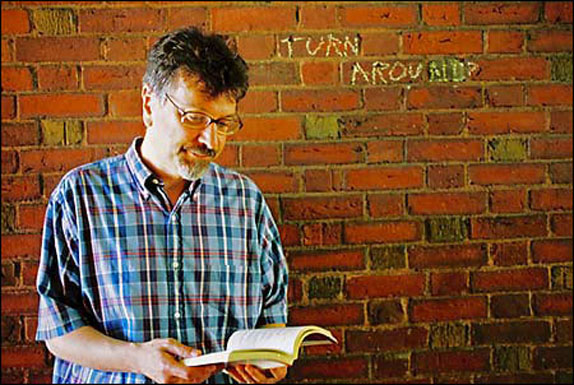This is Scooby Doo Porn Parodya tale of survival.
In the deep cosmos, the Hubble Space Telescope found evidence that a star remains after its companion star (they orbited each other) went supernova — an extremely powerful stellar explosion.
The exploded star, dubbed supernova 2013ge, jostled — but didn't destroy — its nearby companion, explained NASA. Astronomers think that (unlike the sun) most stars have companions.
The graphic below illustrates what happened, in boxes 1-3. (The bottom row of boxes demonstrates what likely will occur next, ultimately showing two cores of exploded stars orbiting each other in box 6).
Two stars orbited each other (known as a binary star system).
One of the stars enlarged into a red giant, which is the precursor to a supernova (when the bloated star collapses on itself). While a red giant, the companion star used gravity to "siphon" off its outer layers of gases.
The red giant star explodes in a dramatic supernova. The companion star sustains the blast.
 An artist's conception of a star surviving a supernova explosion from its companion star (box 3). Credit: NASA / ESA / Leah Hustak (STScI) SEE ALSO: Huge, mysterious blast detected in deep space
An artist's conception of a star surviving a supernova explosion from its companion star (box 3). Credit: NASA / ESA / Leah Hustak (STScI) SEE ALSO: Huge, mysterious blast detected in deep space Webb telescope's new dazzling photos prove it has perfect vision
Amazed scientists watched a giant star explode for the first time
If a scary asteroid will actually strike Earth, here's how you'll know
Astronomers already knew something unusual was occurring with this supernova. Telescopes usually detect one source of brightness from supernovae (the explosions). But supernova 2013ge emanated two "peaks" of brightness. Researchers suspected it was a shock wave hitting the companion star. Now, the latest evidence proves they're right: As the explosion's brightness wanes, they've spotted sustained light emissions from the secondary source, which they suspect is the surviving star.
The stellar survivor was jiggled like a bowl of Jell-O, astronomer Ori Fox, a Hubble researcher, told NASA. But the star will eventually settle back to its pre-explosion form.
After collapsing, the exploded star will transition into its new, extremely compact form. It will either become a neutron star (an object so dense that "a sugar-cube-sized amount of material would weigh more than 1 billion tons, about the same as Mount Everest!," explains NASA) or a black hole (an object so dense and massive even light can't escape it).
It's possible the surviving star and its collapsed companion will continue to orbit one another. One day the surviving star will collapse, too. In the deep future, they could collide and create powerful ripples in spacetime, called gravitational waves. Here on Earth, astronomers have detected these cosmic ripples.
"With the surviving companion of SN 2013ge, we could potentially be seeing the prequel to a gravitational wave event, although such an event would still be about a billion years in the future," Fox told NASA.
(Editor: {typename type="name"/})
 Reading 'House of Holes' in Public by Andrew Palmer
Reading 'House of Holes' in Public by Andrew Palmer
 Adorable pup loses a shocking 80 pounds and is now living his best life
Adorable pup loses a shocking 80 pounds and is now living his best life
 Even the experts think some password
Even the experts think some password
 This teen's amazing DIY dress is ready to light up prom
This teen's amazing DIY dress is ready to light up prom
 UN member states have agreed to a treaty protecting the high seas
UN member states have agreed to a treaty protecting the high seas
Two Poems: 'The Crew Change' and 'Rice in the Spoon' by Don Share
 Two Poems: ‘The Crew Change’ and ‘Rice in the Spoon’By Don ShareAugust 11, 2
...[Details]
Two Poems: ‘The Crew Change’ and ‘Rice in the Spoon’By Don ShareAugust 11, 2
...[Details]
The time has come to remove Facebook from your life
 Delete your Facebook account. No, but really. This is not the exhortation of an internet troll, but
...[Details]
Delete your Facebook account. No, but really. This is not the exhortation of an internet troll, but
...[Details]
Herd of sheep join runners in a German marathon
 During the Wings for Life World Run 2017 in Munich, runners got some unexpected competition when a h
...[Details]
During the Wings for Life World Run 2017 in Munich, runners got some unexpected competition when a h
...[Details]
'Mister Rogers' Neighborhood' is coming to Twitch for an epic marathon
 Hi, television neighbors -- it's time to dust off your cardigan and grab your blue sneakers, because
...[Details]
Hi, television neighbors -- it's time to dust off your cardigan and grab your blue sneakers, because
...[Details]
 Harris Lahti ,April 2, 2025 The Way of All
...[Details]
Harris Lahti ,April 2, 2025 The Way of All
...[Details]
This village in Indonesia is literally made out of rainbows
 Now this is what they call colourful. Kampung Pelangi, which literally translates to Rainbow Village
...[Details]
Now this is what they call colourful. Kampung Pelangi, which literally translates to Rainbow Village
...[Details]
NES Classic is dead, but there's a new way to play Nintendo in HD
 If you're still puzzled over Nintendo's baffling decision to discontinue the extremely popular NES C
...[Details]
If you're still puzzled over Nintendo's baffling decision to discontinue the extremely popular NES C
...[Details]
Even the experts think some password
 You must use at least one uppercase letter, a symbol, and a number. Or, wait, maybe not. According t
...[Details]
You must use at least one uppercase letter, a symbol, and a number. Or, wait, maybe not. According t
...[Details]
 Eli Frankel ,November 15, 2023 Inhospitabl
...[Details]
Eli Frankel ,November 15, 2023 Inhospitabl
...[Details]
The Russians trolled Trump and released photos of him on the internet
 With all the communication between Russian government officials and the presidential campaign of Don
...[Details]
With all the communication between Russian government officials and the presidential campaign of Don
...[Details]
Writing Jobs; Literary Style Icons by Sadie Stein

Ridiculously adorable skateboarding pup crashes into the BBC

接受PR>=1、BR>=1,流量相当,内容相关类链接。